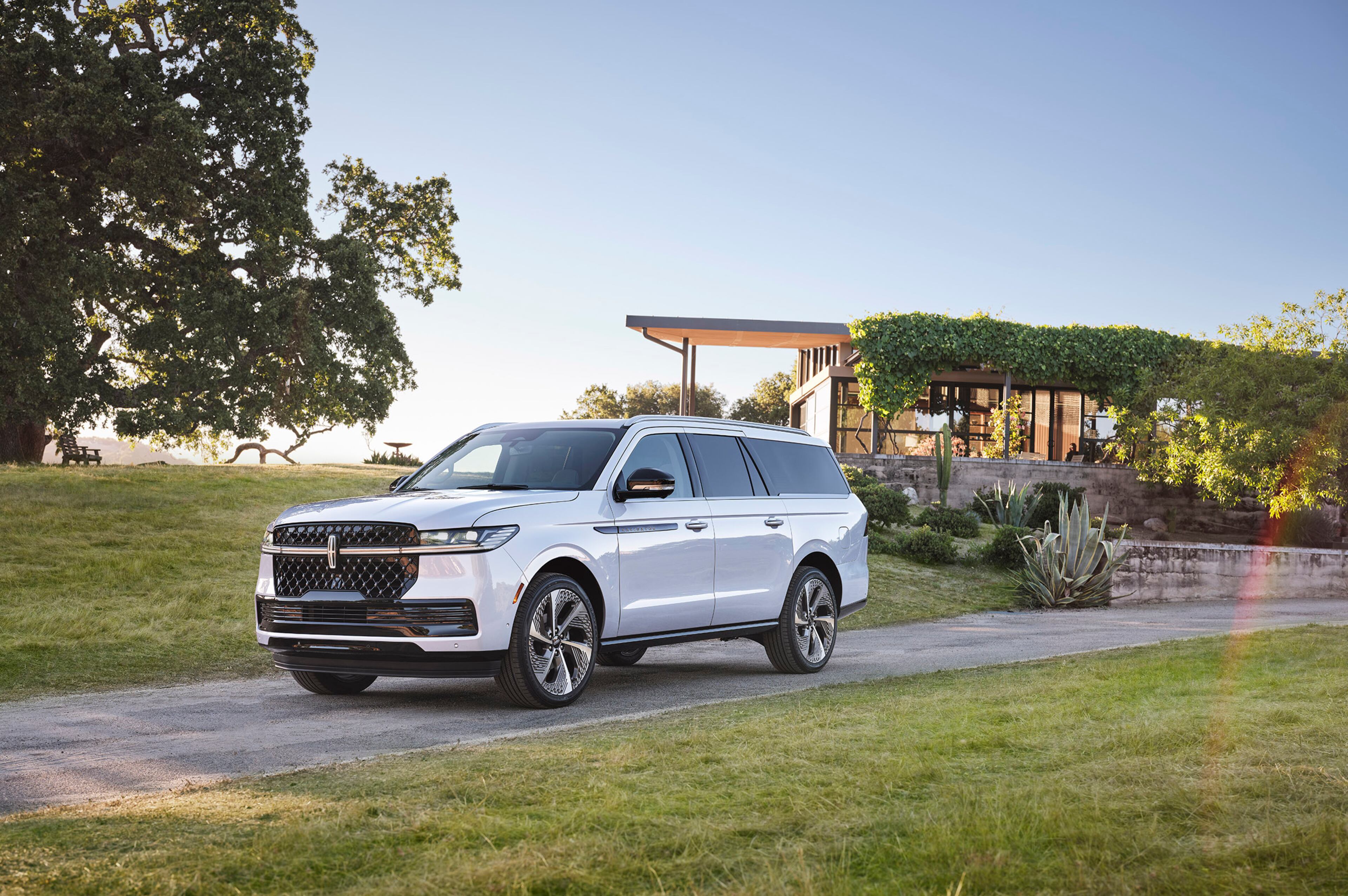Is this the Corvette of the future?
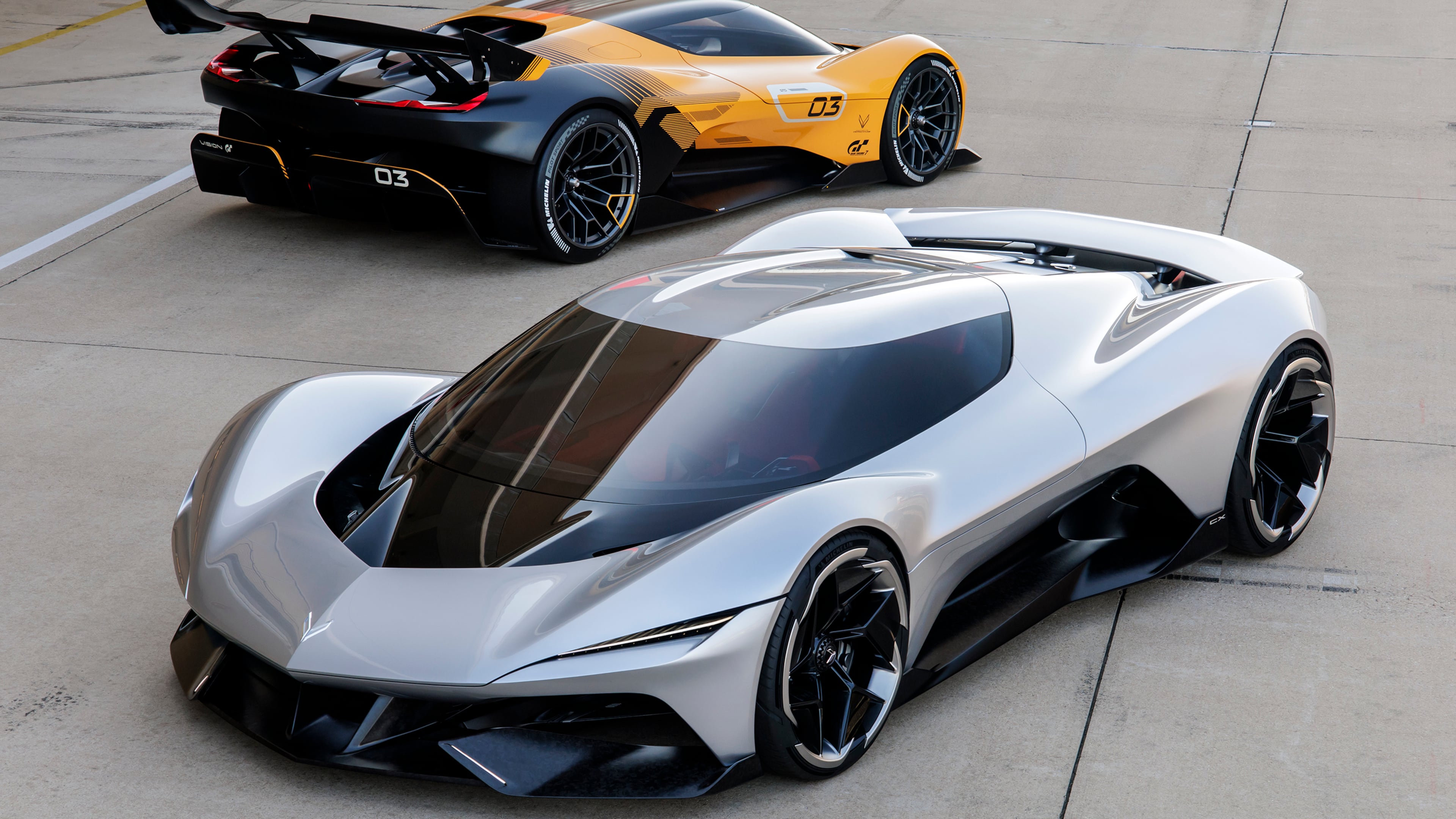
Chevrolet used Monterey Car Week — California’s annual assemblage of exhibitions, auctions and events for enthusiasts — to showcase what might shape the next era of Corvette design.
Last month at The Quail, A Motorsports Gathering, the company revealed two concepts — the Corvette CX and the Corvette CX.R Vision Gran Turismo. These models preview the design language and technology Chevy says will inspire future Corvettes, rather than serve as thinly disguised production prototypes. They’re fabricated ideas, designers’ “what if?” in full scale.
For readers who don’t follow the concept-car beat: Concept cars are automakers’ experimental canvases ― rolling ideas that test design themes and technologies in public before anything is committed to production. Monterey Car Week, which spans multiple events around the Monterey Peninsula each August, has become a favored stage for such unveilings because it concentrates the world’s most passionate car audience in one place.
CX: Electric reimagining
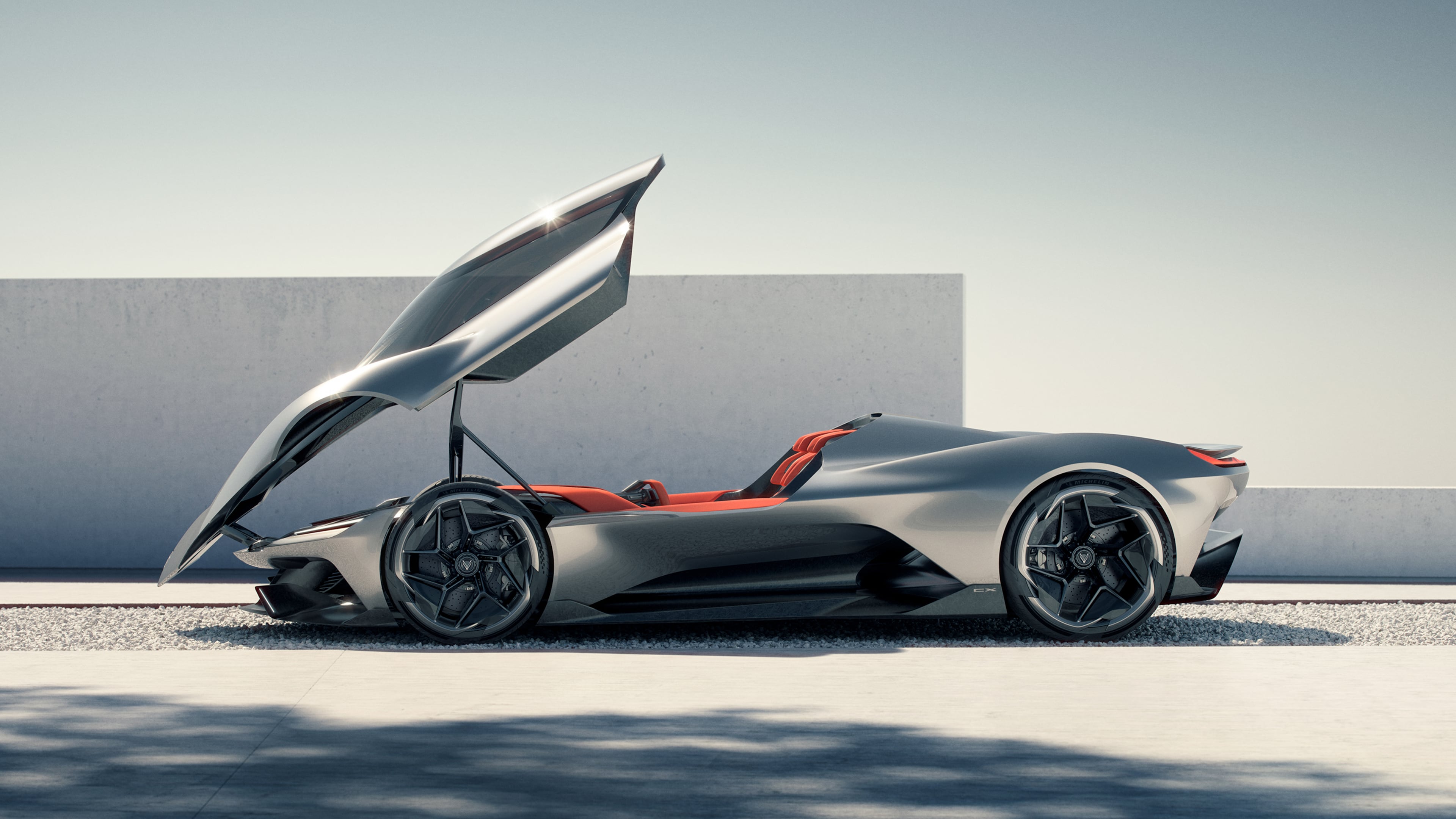
Essentially, the Corvette CX is a ground-up reimagining that still reads Corvette: a long, low stance, slanting nose, quad taillights and a modernized dual-flag logo. Other features are more dramatic than familiar. A forward-opening canopy — think fighter jet and past canopy-style show cars — provides entry. The body integrates active aerodynamics, including a vacuum fan system that draws air through open channels. Adjustable front/rear elements increase downforce and balance.
The propulsion system is designed to maximize design freedom plus enhance straight-line performance. In other words, GM designers didn’t want to be hindered by a large engine that would dictate the bodywork. There’s very little downside to putting Chevy’s LT V-8 engine in any car, but in a small, lightweight package it can box in proportions.
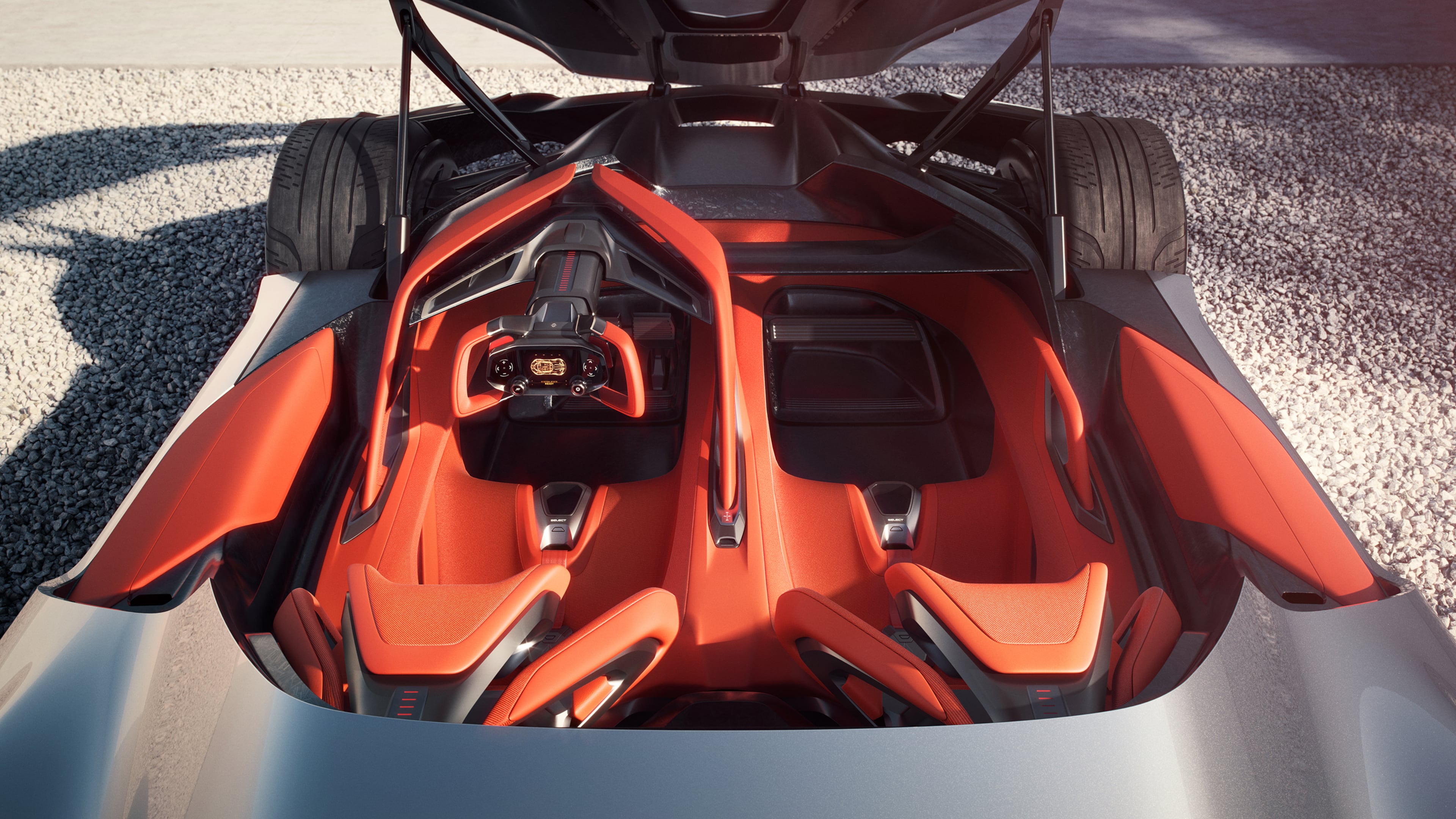
That’s why the Corvette CX goes fully electric: Four motors, one at each wheel, target more than 2,000 horsepower with four-wheel torque vectoring that varies power to each wheel for grip and agility. Its 90-kilowatt-hour battery sits low in the chassis to keep the center of gravity down and the stylists free to chase aerodynamics.
CX.R: Hybrid track vision
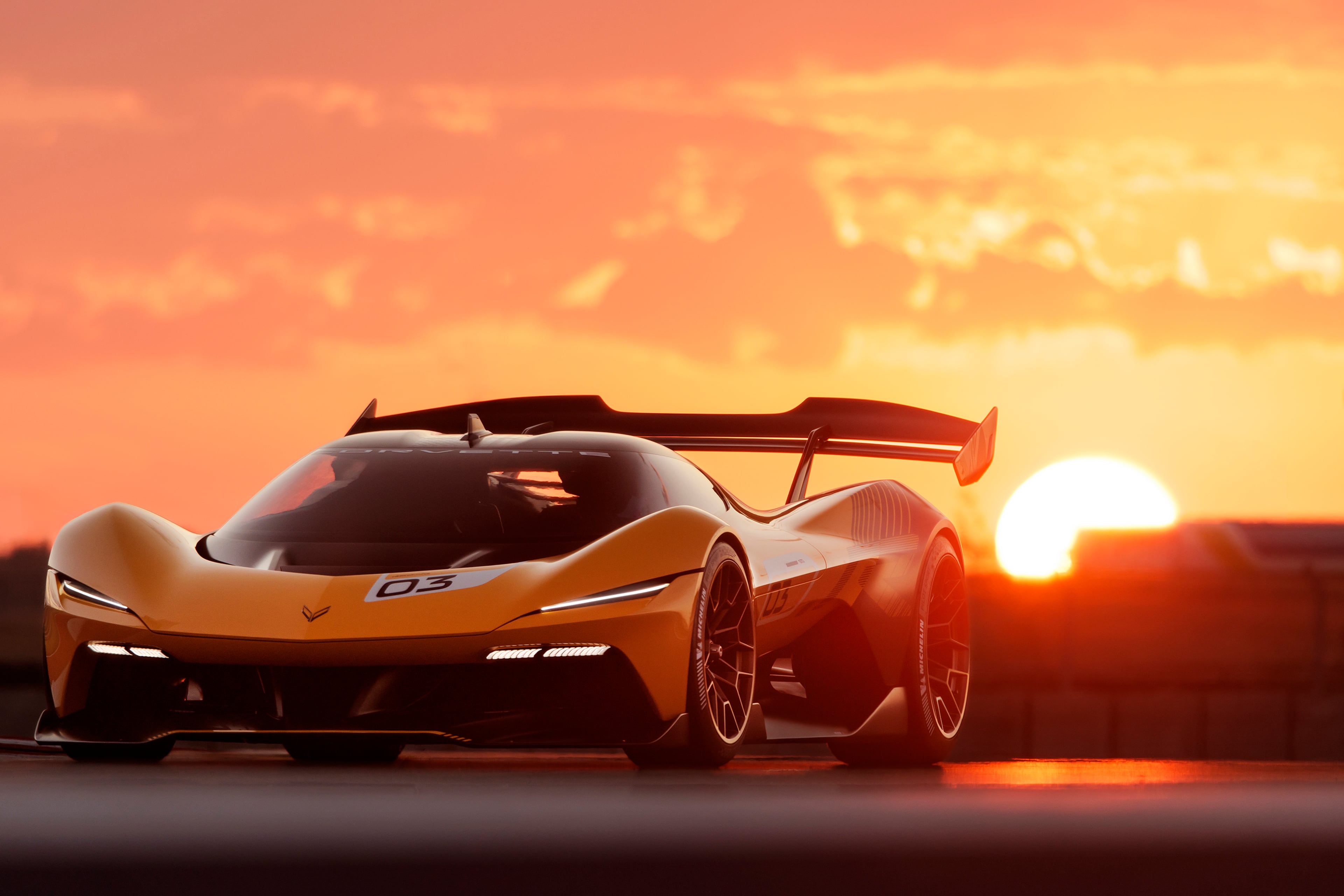
The CX.R Vision Gran Turismo takes the opposite tack for the track. The car features a midmounted, 2.0-liter twin-turbo DOHC V-8 running on renewable e-fuel that can make up to 900 horsepower at 15,000 rpm, driving the rear wheels through an 8-speed dual clutch.
In addition to that, three electric motors — one integrated into the gearbox and one at each front wheel — pile on instant torque and help deliver a combined 2,000-horsepower target with all-wheel drive.
‘Immersive’ cabins
Inside, the CX takes a dramatic immersive approach: deep red, ballistic-textile seats, premium silicone leather, milled aluminum details and low-gloss forged carbon, all tied together with a digital windscreen that extends key information across the base of the windshield.
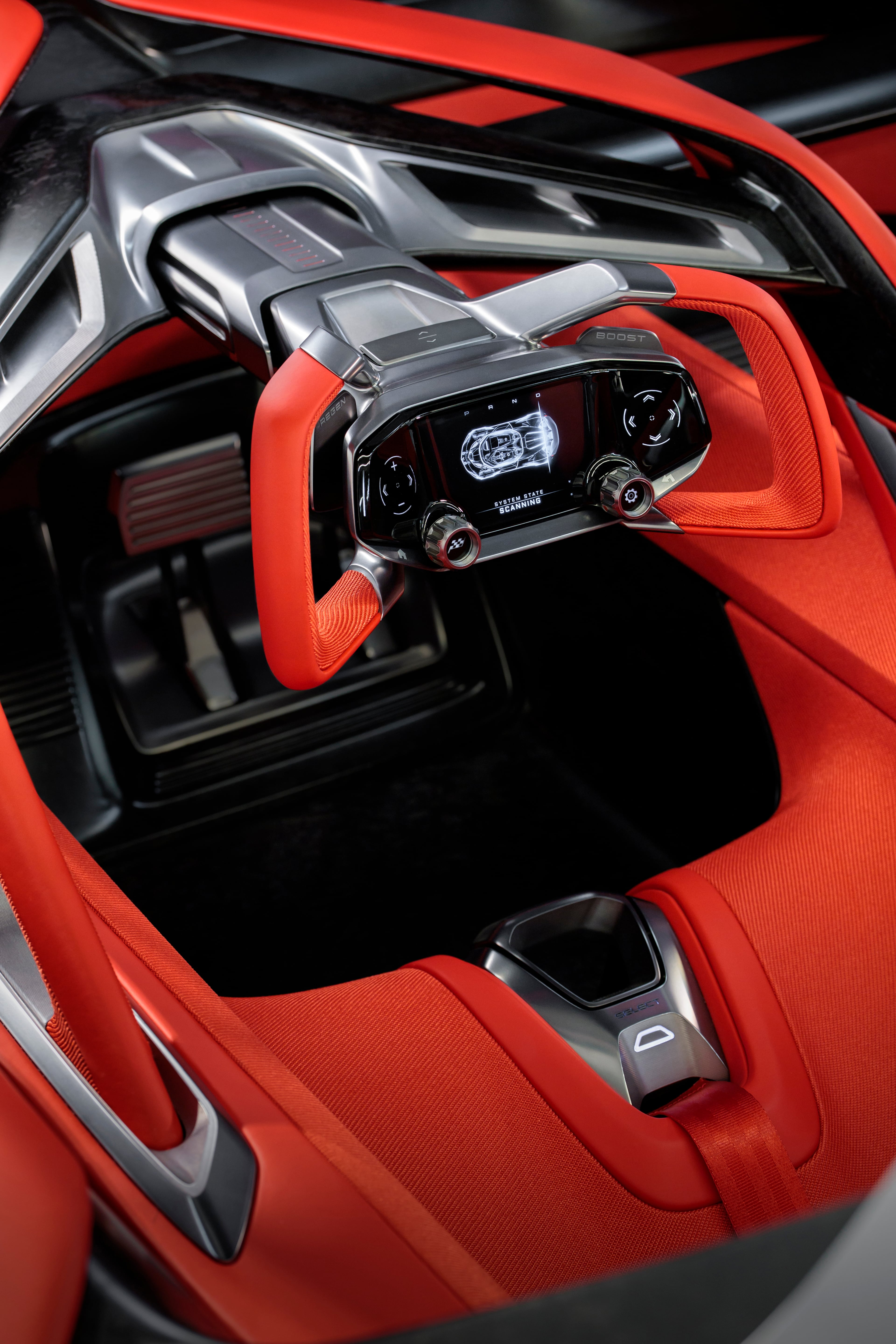
By contrast, the CX.R’s cockpit is purpose-built: exposed carbon surfaces and suede-wrapped foam inserts with higher shoulder and head supports to manage high g-loads. Both feature an F1-style steering yoke with a central digital display.
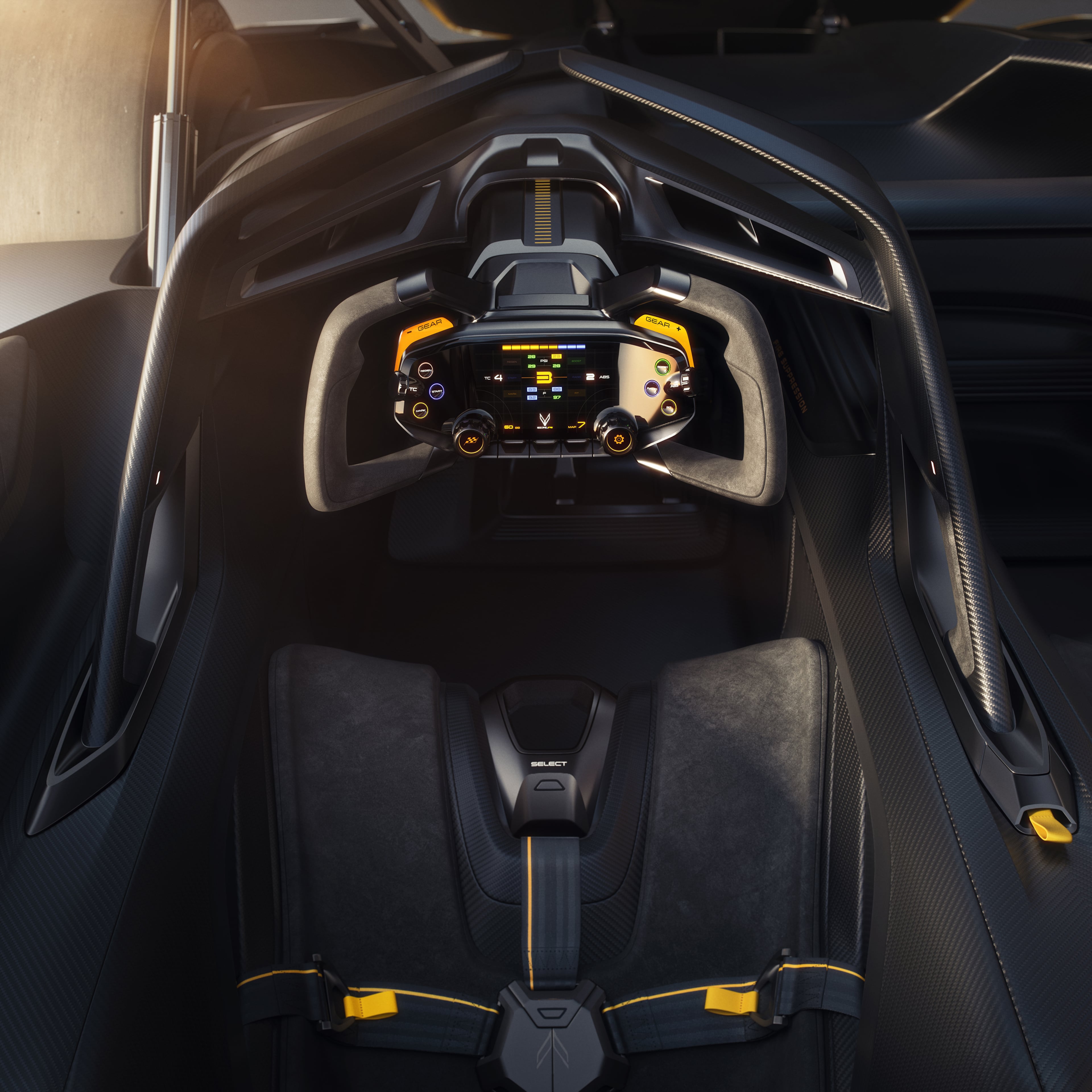
Virtual test drive
As these are concepts, there’s very little likelihood to sit in the driver’s seat. The fun part is that you won’t need a corporate badge or a press pass to “drive” them.
Both designs are now part of the Sony PlayStation Gran Turismo 7 video game in a free update. That’s clever marketing — futuristic Corvette design in front of younger audience around the world — and a way for enthusiasts to judge the concepts by feel, at least virtually.
Signals for Corvette
Both the Corvette CX and CX.R concepts don’t look too far off the mark when imagining a real-world Corvette of the future — fingers crossed that this dream comes true.
Still, Chevrolet officials emphasized these are not the next-gen Corvette — the “C9,” in disguise. Instead, they’re physical representations that could influence future production in varying degrees — the body’s horizontal “chine” line, the aero strategy or the digital display concepts.
Second, Corvette’s identity is flexible enough to have a fantasy four-motor EV street car as well as a hybridized track machine. If anything, that flexibility is the story: The nameplate for “America’s sports car” constantly reinvents itself while staying recognizably Corvette.
Gatherings and reveals matter
Finally, about Monterey Car Week. It isn’t an auto show. It’s a summit, of sorts, where brands mingle with collectors between vintage race sessions and flutes of Champagne. Choosing to reveal the CX duo at The Quail signals the brand’s aspirations, and Chevy is comfortable parking an everyman icon on the same lawn as multimillion-dollar machinery.
The direction seems clear. Preserve the silhouette, modernize the cockpit and materials and open the door to new propulsion. That future is broad enough for purists and newcomers alike.
Brian Moody is a senior editor of Kelley Blue Book and Autotrader and an automotive expert specializing in transportation, car shopping, electric cars, in-car technology and future vehicles.
The Steering Column is a weekly consumer auto column from Cox Automotive. Cox Automotive and The Atlanta Journal-Constitution are owned by parent company, Atlanta-based Cox Enterprises.
